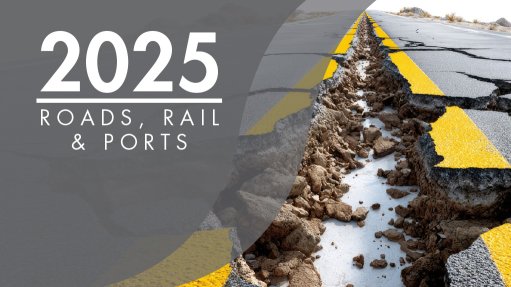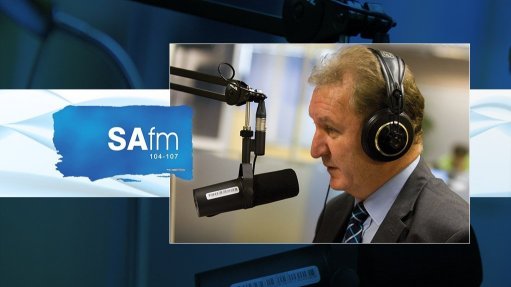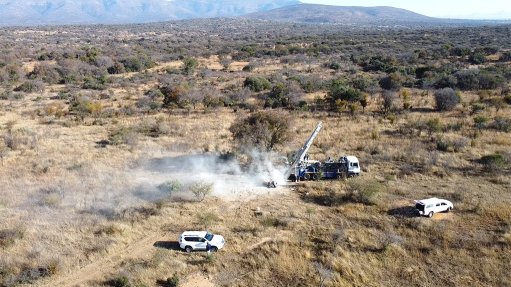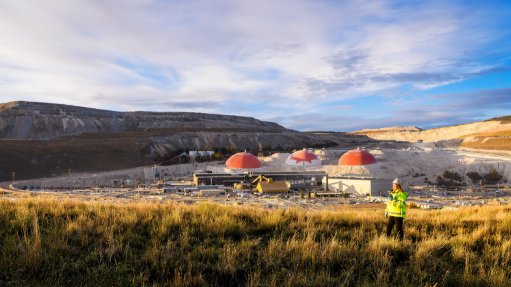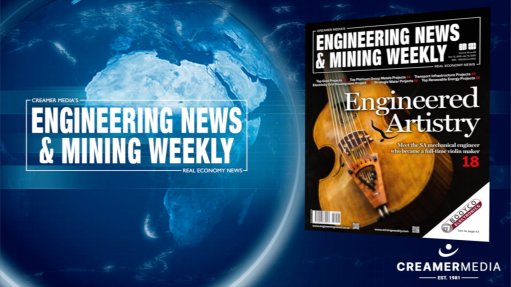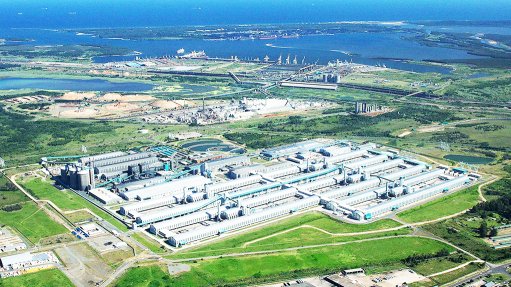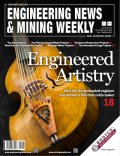UNISA Mining Engineering Graduates Forge New Frontiers in Safer and Smarter Blasting
This article has been supplied.
The mining industry is in constant search for cost-effective and safer ways of extracting mineral resources from the ground to support modern life. Under the supervision of Professor Francois Mulenga, three Master of Engineering graduates from the University of South Africa (UNISA), Nkosinathi Mndawe, Talent Mushwana and Samuel Madanda are advancing mining engineering research with projects that tackle real-world challenges in blasting safety, efficiency and environmental control. All three graduates are currently serving as junior lecturers in the Department of Mining, Minerals and Geomatics Engineering at UNISA.
Taking cognisance of the value of research and human capacity development in the South African mining industry, the Mining Qualifications Authority (MQA) has been funding the appointment of Nkosinathi Mndawe and Talent Mushwana at UNISA. The funding programme falls under MQA’s High Education and Training Lecturer Support Funding aimed at developing and capacitating the South African tertiary education landscape with well-rounded academics. Similarly, Samuel Madanda has been supported by the Minerals Education Trust Fund (METF), a unique collaboration between the South Africa mining industry and academia committed to contributing not only to the retention of academic lecturers in universities but also to sustainable tertiary education in mining engineering amongst others.
Pioneering Research at the Interface of Theory and Practice
In an industry where innovation meets the raw forces of nature, three graduates from the University of South Africa are demonstrating the transformative power of research through their Master of Engineering projects. Under the guidance of Professor Francois Mulenga, a leading researcher in mining and minerals engineering, Nkosinathi Mndawe, Talent Mushwana and Samuel Madanda have each completed their postgraduate research projects that combine scientific rigour with practical application. Their work focused on scientifically testing for the first time in South Africa the efficacy of a blasting accessory known as Varistem® stemming plug. This blasting accessory, supplied by ERG Industry (Pty) Ltd, has been empirically purported to reduce ground vibrations, minimise air blasts and increase rock fragmentation by containing the explosive energy resulting from a blast within the rock mass. The scientific enquiry that was pursued by Nkosinathi Mndawe, Talent Mushwana and Samuel Madanda reflects UNISA’s commitment to research that supports safer and more sustainable mining practices. “Postgraduate research allows you to take the theory and prove it in the field,” says Mndawe. “It’s about improving safety and efficiency at the same time.”
Reducing Ground Vibrations: Nkosinathi Mndawe’s Study on Stemming Plugs
For Nkosinathi Mndawe, the key question was whether blast-induced ground vibrations, a persistent challenge in mining operations, could be mitigated through simple design improvements. His research examined the use of the Varistem® stemming plugs, small but effective tools, inserted in blast holes to control the release of explosive energy. Using multiple empirical models of the Peak Particle Velocity (PPV) characteristic of blast-induced ground vibrations and field data collected from a South African surface mining operation, Mndawe confirmed that stemming plugs significantly reduce vibration intensity, thereby improving operational safety. The findings have both academic and industrial significance. They offer mines practical and scientifically informed strategies for the control of ground vibrations generated during rock blasting. Mndawe is currently preparing a journal paper and a technical review to share his results more widely
Barriers and Air Blasts: Talent Mushwana’s Contribution
In her master’s research, Talent Mushwana tackled another critical challenge, that is, reducing air blasts generated during blasting operations by surface mines. Through the comparative analysis of stemming methods centred on the use of aggregates charged with and without the inclusion of Varistem® stemming plugs in blast holes, her study revealed that stemming plugs offer superior performance in minimising air blast effects.
Her work not only contributes to safer and more efficient blasting but also underscores the growing visibility of women in the mining engineering discipline.
“As a young woman in mining engineering, completing my master’s feels like breaking a barrier,” Mushwana reflects. “There are still very few women with advanced degrees in this field, and I hope my journey encourages others to take the same path.”
Optimising Quarry Operations: Samuel Madanda’s Efficiency Study
At the quarry face, Samuel Madanda focused his research on improving rock fragmentation and crusher throughput, two key factors in operational efficiency. His study examined how variations in stemming length and timing delays affect rock fragmentation and downstream processing performance. Varistem® stemming plugs were used throughout the field test work as part of the stemming protocol. In doing so, his research work specifically looked at understanding the contribution of Varistem® stemming plugs to the optimisation of rock blasting operations.
The results were conclusive and highlighted the fact that shorter stemming lengths together with the inclusion of Varistem® stemming plugs produced better rock fragmentation and increased crusher throughput by approximately seven per cent. “Studying further allowed me to bring together data analysis, field testing and real production goals,” Madanda explains. “It’s about creating a link between the lab and the pit.”
Support Structures for Academic Success
All three graduates attribute their success to the supportive academic environment provided by UNISA’s College of Science, Engineering and Technology (CSET). The university’s flexible distance-learning model enabled them to balance professional responsibilities in the Department of Mining, Minerals and Geomatics Engineering with intensive research demands. The Mining Qualifications Authority (MQA) and the Minerals Education Trust Fund (METF) also provided vital financial support covering tuition, stipends and essential research tools. Crucially, each graduate highlighted the mentorship of Professor Francois Mulenga as instrumental in turning their research concepts into valuable, practical and field-validated contributions to the mining sector.
Why Postgraduate Research Matters
While many mining engineering graduates transition directly into industry after completing their undergraduate degrees, Mndawe, Mushwana and Madanda chose postgraduate research as a path to deeper impact. Their research projects illustrate how postgraduate study cultivates critical thinking, data analysis and problem-solving skills that translate directly into leadership potential and innovation capacity within the mining industry.
“It’s not just about getting another qualification,” Mndawe notes. “It’s about developing critical thinking and problem-solving skills that make you more valuable in the workplace.”
In the words of Prof Francois Mulenga, “UNISA’s Mining Engineering is about industry-based research.” As a passionate advocate of industry-based research, Mulenga explains that “this is research that is done by academia, with the mining industry, for the benefit of the industry while advancing mining engineering as a scientific discipline.” The work done by Mndawe, Mushwana, Madanda and other postgraduate students as part of UNISA’s Mining Engineering research embraces this concept of industry-based research. Mulenga believes that industry-based research is key to rendering the South African mining industry competitive globally. “The use of industry-based research protocols to test the usefulness of the Varistem® stemming plug is testament to this,” Mulenga concluded.
A sample of the Varistem® stemming plugs with a diameter of 210 mm can be seen here while the picture below shows how a Varistem® plug is installed in a blasthole as part of the stemming. The plug is inserted between the column of explosives and the column of aggregate material in preparation for rock blasting with the aim of containing the explosive energy resulting from a blast for as long as possible in the rock mass. This then redirects the explosive energy towards breaking the rock thereby ensuring that the energy is not wasted in the form of ground vibrations and air blasts amongst others.
Looking Ahead: Shaping a Smarter and Safer Mining Future
The work of the three mining engineering graduates exemplifies UNISA’s role in driving applied research that addresses real-world challenges. Their industry-based research in blasting optimisation, environmental safety and process efficiency represents significant contributions to the evolving field of mining engineering. As the mining industry continues to prioritise safety, sustainability and efficiency globally in line with the United Nations’s Sustainable Development Goals, research of this nature will be essential to support the underlying efforts. Most importantly, the research by the three mining engineering graduates aligns with three of the ten Catalytic Niche Areas (CNA) embodying UNISA’s research agenda: (a) Energy, (b) Feminist, Womanist and Bosadi Theorisations and (c) Student Support and Co-Curricular Activities. Indeed, the first CNA on “Energy” has enabled the graduates to integrate sustainability in curriculum and postgraduate research. The contribution to the second CNA on “Feminism” has resulted in the promotion of gender equity in leadership and governance in the mining sector by graduating female researchers. And the last CNA speaks to the on-going civic engagement and professional citizenship taking place between UNISA and the industry for a smarter and safer mining industry in South Africa.
Under the continued mentorship of Professor Mulenga and with the support of UNISA’s College of Science, Engineering and Technology (CSET), future cohorts of postgraduate students will continue to forge new pathways in mining innovation, proving that sometimes, the most powerful changes in mining begin not underground, but in the minds of those determined to make a difference.
By Lindelwa Makhanya PR student/ Administrative officer in Mining, Minerals and Geomatics Engineering.
Article Enquiry
Email Article
Save Article
Feedback
To advertise email advertising@creamermedia.co.za or click here
Press Office
Announcements
What's On
Subscribe to improve your user experience...
Option 1 (equivalent of R125 a month):
Receive a weekly copy of Creamer Media's Engineering News & Mining Weekly magazine
(print copy for those in South Africa and e-magazine for those outside of South Africa)
Receive daily email newsletters
Access to full search results
Access archive of magazine back copies
Access to Projects in Progress
Access to ONE Research Report of your choice in PDF format
Option 2 (equivalent of R375 a month):
All benefits from Option 1
PLUS
Access to Creamer Media's Research Channel Africa for ALL Research Reports, in PDF format, on various industrial and mining sectors
including Electricity; Water; Energy Transition; Hydrogen; Roads, Rail and Ports; Coal; Gold; Platinum; Battery Metals; etc.
Already a subscriber?
Forgotten your password?
Receive weekly copy of Creamer Media's Engineering News & Mining Weekly magazine (print copy for those in South Africa and e-magazine for those outside of South Africa)
➕
Recieve daily email newsletters
➕
Access to full search results
➕
Access archive of magazine back copies
➕
Access to Projects in Progress
➕
Access to ONE Research Report of your choice in PDF format
RESEARCH CHANNEL AFRICA
R4500 (equivalent of R375 a month)
SUBSCRIBEAll benefits from Option 1
➕
Access to Creamer Media's Research Channel Africa for ALL Research Reports on various industrial and mining sectors, in PDF format, including on:
Electricity
➕
Water
➕
Energy Transition
➕
Hydrogen
➕
Roads, Rail and Ports
➕
Coal
➕
Gold
➕
Platinum
➕
Battery Metals
➕
etc.
Receive all benefits from Option 1 or Option 2 delivered to numerous people at your company
➕
Multiple User names and Passwords for simultaneous log-ins
➕
Intranet integration access to all in your organisation




